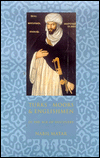Melungeons, history, genealogy, research, articles - About the MHA
The Melungeon Heritage Association is a non-profit organization dedicated to preserving Melungeon history and heritage. Most people are aware that MHA sponsors the biannual Unions, multi-day gatherings for the presentation of information about our people. We also sponsor one-day gatherings, which occur on the �off� years between Unions. These gatherings are only a part of the work of MHA, however. This organization is also dedicated to several other areas.
Our primary area of concern is telling the story of the Melungeon people and continuing to put together the mosaic of our past that has been hidden for so long. To this end, MHA supports research efforts aimed at documenting the history of the Melungeons and other mixed-ancestry people. At the same time, MHA wants to begin to collect and preserve the artifacts of our past. This will form the groundwork for our long-term dream of a Melungeon Research Center, which would give all our materials a permanent home.
Our mission is to document and preserve the heritage and cultural legacy of mixed-ancestry peoples in or associated with the southern Appalachians. While our focus will be on those of Melungeon heritage, we will not restrict ourselves to honoring only this group. We firmly believe in the dignity of all such mixed ancestry groups of southern Appalachia and commit to preserving this rich heritage of racial harmony and diversity. "


















